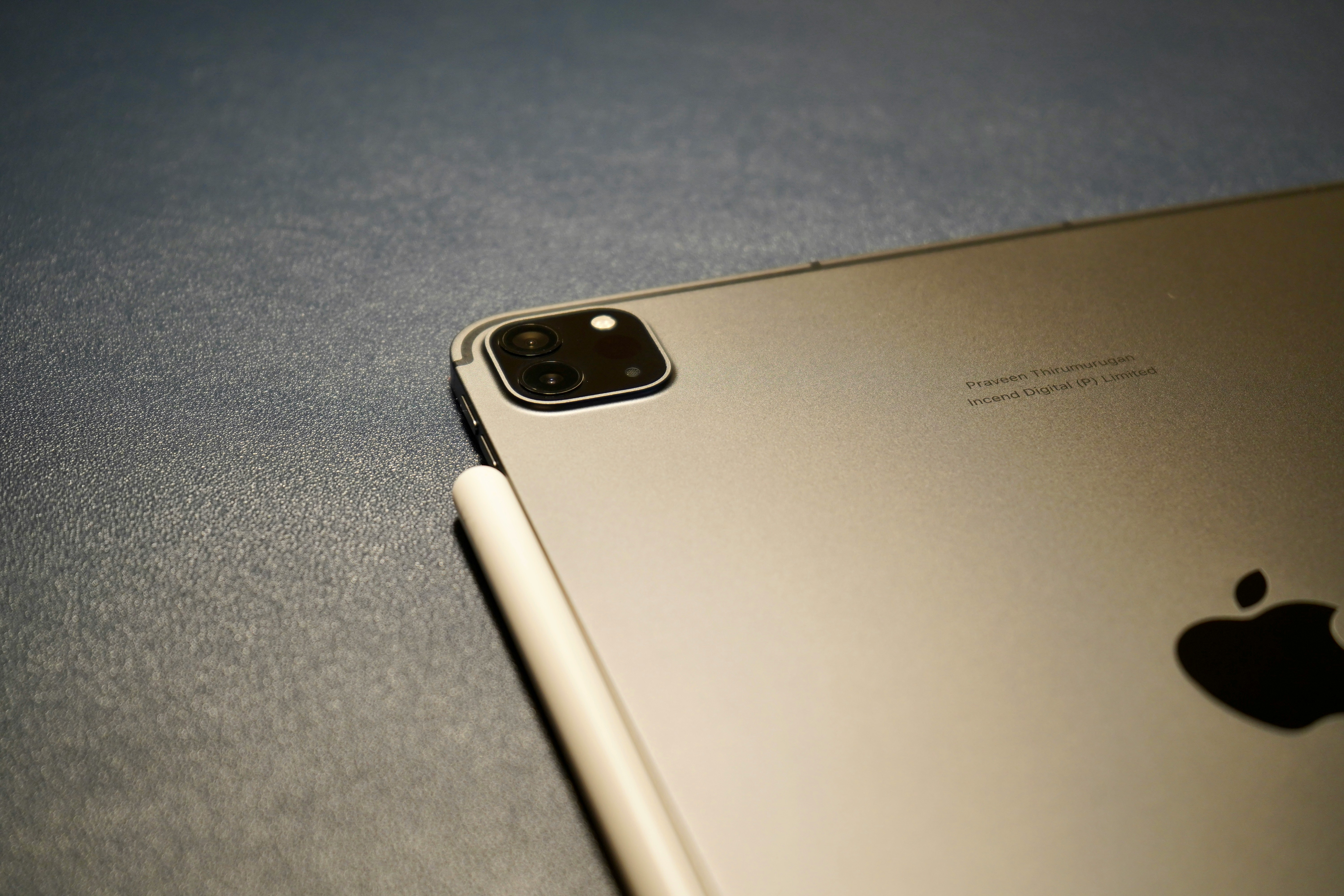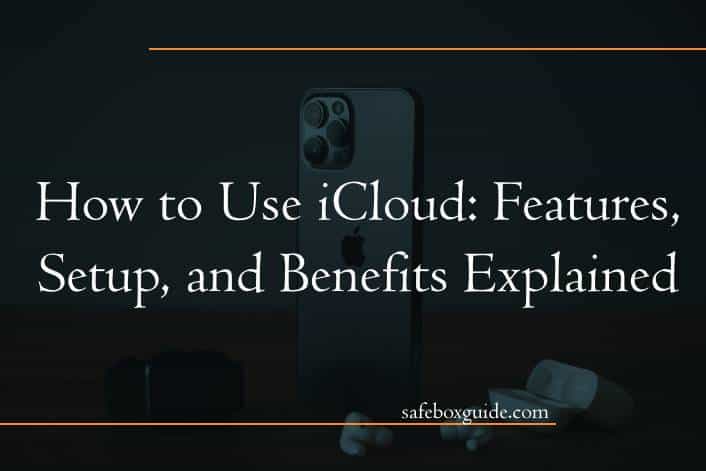In an age where our digital lives are increasingly intertwined with the cloud, mastering iCloud can feel like unlocking a treasure chest of convenience and efficiency. Imagine easily accessing your photos, documents, and contacts from any device—whether you’re at home, in the office, or on a spontaneous adventure. Apple’s iCloud service not only provides seamless synchronization across all your devices but also enhances security and backup options that safeguard your precious memories from being lost forever.
But how do you tap into this powerful tool effectively? In this article, we’ll guide you through the maze of features that iCloud offers—from automatic backups to document sharing—while breaking down the setup process so even the most tech-averse users can navigate it with ease. By understanding both its benefits and capabilities, you’ll be well-equipped to make iCloud work for you, transforming your digital experience into one that’s more organized and accessible than ever before. Join us as we delve deep into everything you need to know about harnessing the full potential of iCloud!
Contents
What is iCloud? Overview and Purpose
iCloud is Apple’s cloud storage service that seamlessly integrates with its ecosystem, providing users with a reliable and efficient way to store, sync, and back up their data across devices. At its core, iCloud acts as a digital vault where photos, documents, app data, and even device backups are securely stored in the cloud. This ensures that whatever you create or capture on one Apple device can be accessed on another—be it an iPhone, iPad, MacBook, or even through a Windows PC via the iCloud application.
The true power of iCloud lies in its ability to enhance productivity and collaboration while delivering peace of mind with robust security features. With automatic syncing capabilities, changes made on one device reflect instantly across all others; this not only streamlines workflows but also reduces the risk of losing important files due to hardware malfunctions or lost devices. Moreover, functionalities such as Family Sharing allow multiple users to access shared content without compromising individual privacy—an elegantly designed solution for families or teams needing both connection and separation within their digital lives. Ultimately, iCloud transforms how users interact with their data by making it accessible anytime and anywhere while fostering a sense of interconnectedness among Apple products.

Key Features of iCloud Explained
iCloud offers a seamless integration across Apple devices, but its true power lies in features that enhance user experience. One standout capability is iCloud Drive, which allows you to store and access files from any device—be it an iPhone, Mac, or iPad. Imagine starting a project on your MacBook at home and effortlessly continuing it on your iPhone during your commute; iCloud Drive makes this fluid transition possible with real-time syncing. Additionally, the ability to share folders and collaborate with others means you’re not just storing files, but engaging in dynamic workflows.
Another noteworthy feature is Photos with iCloud Photo Library. This function not only backs up every snap you take but also employs advanced image recognition to help you organize those memories into albums based on events or people. Ever found yourself scrolling endlessly through thousands of pictures? With smart search capabilities powered by machine learning, finding that one photo becomes quick and intuitive—changing how we curate our digital lives. Furthermore, tools like Find My can locate lost devices using crowd-sourced location data from other Apple users, providing peace of mind when misplacing that essential piece of technology.
Finally, the Family Sharing option enriches the experience by allowing multiple family members to enjoy shared access to purchased apps and media without needing separate accounts or payments. Parents can monitor their children’s activity while granting autonomy with shared calendars for family events—a perfect harmony between supervision and independence. By weaving together convenience and security in these key features, iCloud isn’t just a cloud service; it’s an essential part of modern digital life that evolves alongside its users’ needs.
Setting Up Your iCloud Account
Setting up your iCloud account is a straightforward yet crucial step in harnessing the full potential of Apple’s ecosystem. Begin by navigating to the Settings app on your iPhone or iPad, and tap on your name at the top of the screen—this acts as a gateway to all things Apple ID. If you don’t have an account yet, simply select Create New Apple ID and follow the prompts. Apple’s registration process not only requires basic personal information but also allows you to choose security questions that enhance your account’s protection.
Once you’ve established your iCloud account, take a moment to customize it according to your needs. You can selectively enable services like Photos, Notes, and Contacts, which ensures you’re using storage efficiently without overwhelming yourself with unnecessary backups. Don’t forget about two-factor authentication; this extra layer of security fortifies your data against unauthorized access while granting peace of mind as you let go of manual backups. With everything set up correctly, you’ll find that accessing files across multiple devices becomes seamless and intuitive—a true testament to Apple’s commitment to user-friendly experiences.

How to Use iCloud on Devices
Using iCloud seamlessly across your devices enhances not only accessibility but also the overall experience of managing your digital life. For instance, when you take a photo on your iPhone, it automatically syncs to iCloud, allowing you to view and share it from any device connected to your Apple ID—like an iPad or MacBook—without missing a beat. This interconnectedness fosters a sense of fluidity in how we interact with our content; no longer are we tethered to a single device for our memories or documents.
Setting up iCloud is remarkably straightforward. After enabling it through the Settings app on your devices, customize what you’d like to back up—from photos and notes to apps and bookmarks. Once configured, additional features like Family Sharing can transform how multiple users enjoy shared access without compromising individual privacy. Each family member can have their own space within the shared ecosystem while benefiting from collective storage for apps and media purchases—a perfect blend of personal touch and community spirit that enhances family interactions in today’s digital age.
Managing Storage Space on iCloud
Managing storage space on iCloud requires a strategic approach to ensure you get the most out of your allocated space. One effective strategy is to periodically review and optimize what’s stored in iCloud Drive. Consider utilizing the built-in “Optimize Storage” feature, which automatically removes older files from your devices when space is low while keeping them accessible via iCloud. This not only declutters your devices but also ensures that important documents remain safe and retrievable.
Moreover, don’t overlook the significance of apps that back up directly to iCloud. Many default applications—such as Photos, Messages, and Notes—can accumulate data quickly. Regularly navigate to Settings > [Your Name] > iCloud > Manage Storage to see what’s consuming space and take action accordingly; this might include offloading photos or moving large attachments from Messages elsewhere. Finally, consider transferring non-essential files or backups to alternative cloud services or local storage—for instance, an external hard drive—to create a more efficient digital environment without compromising access to vital resources.

Sharing Files and Collaborating with iCloud
One of the standout features of iCloud is its seamless file sharing and collaboration capabilities, which foster an environment for creativity and productivity. With just a few clicks, users can share documents, spreadsheets, or presentations via iCloud Drive. This functionality is particularly beneficial for teams working on projects across different locations; changes made by one team member are instantly updated and visible to all collaborators, eliminating the hassle of version control. Additionally, shared folders allow for organized teamwork where members can access relevant files anytime through their Apple devices.
Beyond mere file sharing, iCloud enhances collaboration by integrating with applications like Pages, Numbers, and Keynote. These tools enable real-time editing among multiple users—a game-changer for brainstorming sessions or crucial project deadlines. As a bonus feature, comments and feedback can be left directly within documents, facilitating dynamic discussions without needing to juggle multiple threads in email chains or messaging apps. Embracing these collaborative functionalities not only streamlines workflows but also fosters innovation through diverse input from various contributors.
Conclusion: Maximizing Your Experience with iCloud
In conclusion, maximizing your experience with iCloud hinges on leveraging its integration and automation capabilities across all your Apple devices. By enabling features like iCloud Drive for seamless file sharing and collaboration, you not only declutter your workspace but also enhance productivity. Additionally, setting up Family Sharing extends these benefits to loved ones, allowing everyone to enjoy collectively shared apps, music, and storage plans—making technology more accessible and enriching for families.
Don’t overlook the security features that come with iCloud either; utilizing two-factor authentication adds an essential layer of protection for your sensitive data. Regularly reviewing your backup settings ensures that essential files are safeguarded against unforeseen contingencies. In a world driven by digital connectivity, staying organized and mindful of how you utilize these tools can transform mundane tasks into streamlined processes. Embrace the entire ecosystem, and you’ll uncover how effortlessly it can boost both efficiency and creativity in daily life.

